A Journey Through the Stories of Our Town
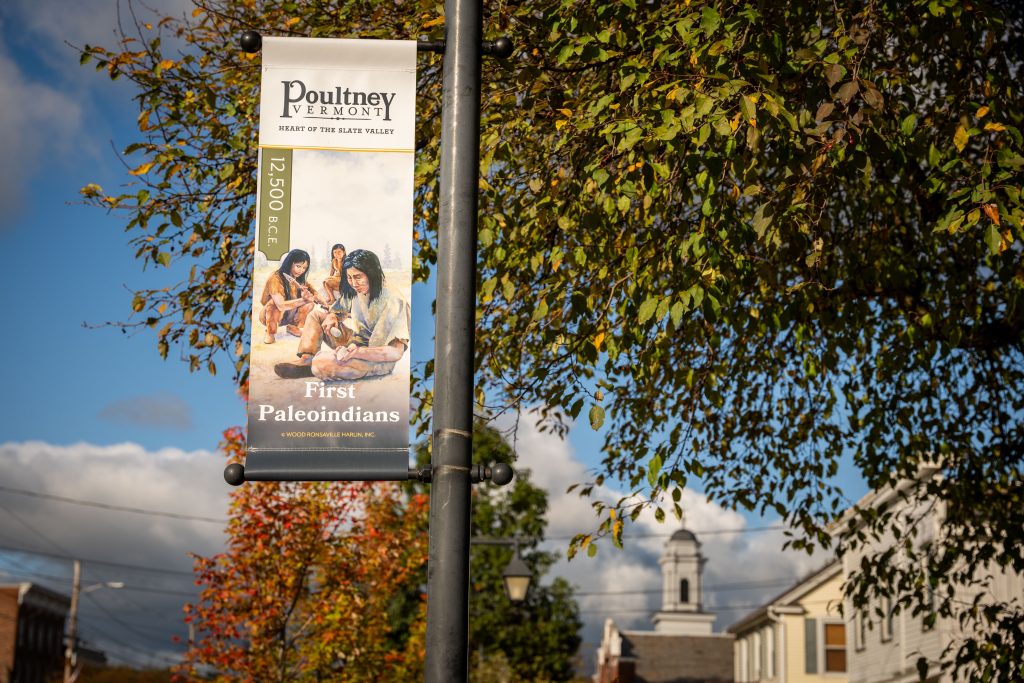
Intro
Poultney has a rich history that spans centuries and is shaped by the pioneering spirit of its founders and the diverse cultures of those who have called it home. From its beginnings as a frontier town and transportation hub to its evolution into a thriving community of farmers, quarry workers, educators, and artists, Poultney has always been a place where hard work and determination have flourished.
This banner project aims to showcase its history, highlighting the key events, people, and places that have defined the town. From the construction of the Poultney Turnpike to the establishment of the first Jewish community, the rise of the slate industry, and the founding of modern organizations and traditions, these banners will tell the story of Poultney’s past and how it has shaped the community we know today.
As we look to the future, we hope that this project will inspire and educate our community’s residents and visitors alike, encouraging everyone to take pride in the rich history of our town and work together to build a bright future for Poultney.
Thanks
This project was a collaboration between the Poultney Historical Society and the Poultney Downtown Revitalization Committee with support from the Village and Town of Poultney. It was made possible through a grant from the Poultney-specific Hills & Hollows Fund by the Vermont Community Foundation.
Make a Gift to the Poultney Historical Society
Learn More About the Poultney Downtown Revitalization Committee
We’d also like to thank our talented team of all-local contractors:
Lyle Welding & Fabrication, Poultney, VT
REclaimED Makerspace, Poultney, VT
Hadeka Stone Corporation, Hampton, NY
Awesome Graphics, Rutland, VT
Timeline
- 12,500 B.C.E. — First Paleoindians
- 1,000 B.C.E. — Indian Tribes Settle
- 1761-1772 C.E. — Poultney Chartered & Settled
- 1770 C.E. — Green Mountain Boys
- 1777 C.E. — Valiant 13
- 1784 C.E. — Jeffrey Brace
- 1791 C.E. — Union Academy
- 1834 C.E. — Troy Conference Academy
- 1851 C.E. — Tracks Reach Poultney
- 1854 C.E. — Slate Industry
- 1860 C.E. — The Two Editors
- 1861 – 1865 C.E. — American Civil War
- 1867 C.E. — First Jewish Community
- 1870 C.E. — Start of Tourism
- 1873 C.E. — The Journal Press
- 1880 C.E. — Bustling Downtown
- 1895 C.E. — Poultney Public Library
- 1900 C.E. — Old Town Hall
- 2003 C.E. — First Maplefest
- 2013 C.E. — Stone Valley Arts
- 2015 C.E. — Slate Valley Trails
- Today — Build Our Future
B.C.E., C.E.?
Any timeline faces the question of how to designate when we started counting. Traditionally, Americans
used A.D., Anno Domini, or the Year of Our Lord, and B.C., Before Christ. But as society becomes more
diverse and we recognize cultures from around the world, that approach can be seen as insensitive.
Scholars have moved to use C.E. and B.C.E., Common Era and Before Common Era, as religiously neutral
alternatives. Still, many people understand A.D. and B.C. as historical eras without any thought of their
religious origins. A.D. and C.E., B.C. and B.C.E., refer to the same years.
•—
12,500 B.C.E.
First Paleoindians
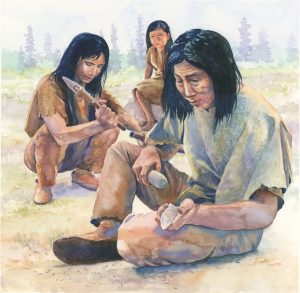
Painting by Rob Wood
Wood Ronsaville Harlin, Inc.
Until about 13,500 years ago, the Laurentide Ice Sheet, at places a mile-and-a-half thick, covered what is today Vermont. As the climate warmed and the glacial ice retreated, the first people moved north from the Hudson River Valley, perhaps 12,500 years ago.
These hunter-gatherers are termed Paleoindians by scientists. The land they inhabited was tundra. They hunted woolly mammoths and caribou, rabbits, and ducks. The saltwater Champlain Sea was home to whales, seals, crustaceans, and mollusks. At one time, a branch of the Champlain Sea reached as far as Poultney.
Around 9,000 years ago, the sea transitioned into a freshwater lake, and Indigenous people once again had to adapt to a changing climate. Although artifacts from this period are rare in the Poultney area, enough has been found to confirm the presence of a Paleoindian population in the region.
—•—
1,000 B.C.E.
Mohican & Abenaki
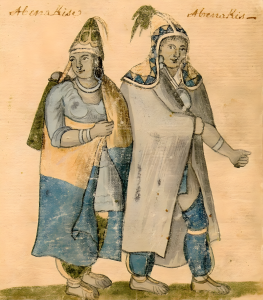
Evidence of the early inhabitants of our area has been found at Lake St. Catherine and Lake Bomoseen and along the Poultney River. The Poultney Historical Society has a collection of stone tools and projectile points found in town. But much of the early history of native people in our region is unknown. The homeland of the Abenaki was to the north and extended south on Lake Champlain. The Mohicans (sometimes spelled Mahicans) lived along the upper Hudson River and in southwestern Vermont.
Both were part of the Algonquin language group and might have shared Poultney’s forests and lakes. Throughout North America, American Indians were decimated by European diseases to which they had no immunity. Intertribal warfare and a century of war between the French and the British destabilized American Indian life.
Today Vermont recognizes four Abenaki tribes or bands. Mohicans live in Wisconsin as part of the Stockbridge-Munsee Community.
It’s important to recognize the historical and contemporary presence of the American Indians in the Poultney area and to acknowledge the ongoing impacts of colonization on indigenous communities. By acknowledging the rightful ownership of the land by the Mohican and Abenaki tribes, we can work toward reconciliation and a more just and equitable society.
—•—•—
1761-1772 C.E.
Poultney Chartered & Settled
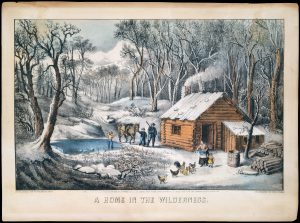
Colored Lithograph by Currier & Ives
Image provided by The Metropolitan Museum of Art
Poultney was chartered in 1761 by Royal Governor Benning Wentworth through one of his 60 “New Hampshire Grants” that year. Most grantees were residents of Litchfield County, Connecticut, and Berkshire County, Massachusetts.
Poultney was finally settled in 1771 by Thomas Ashley and Ebenezer Allen and their families at a time when most of Vermont was still wilderness. These early settlers faced rival land claims from New York and endured severe hardships while building log houses and cultivating the land. A town meeting was held in 1772 and plans were made to build a road from Wells to Castleton.
—•—
1770 C.E.
Green Mountain Boys
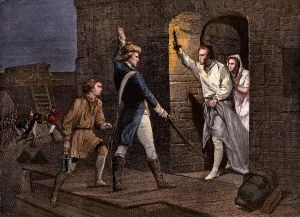
Painting by Alonzo Chappel
Engraving by Thomas Phillibrown
The Green Mountain Boys were important in Poultney’s early history. Ethan Allen owned land in town, and there are tall tales of his hunting exploits. Leaders of the Green Mountain Boys met here, and once as a joke offered a reward for the capture of two important New York colonial officials. Ethan’s brother Heber was an early settler and the first town clerk.
Poultney voted to award Captain Seth Warner one hundred acres for striking a New York constable with his cutlass. When Ethan Allen seized Fort Ticonderoga at the start of the American Revolution, four Poultney men were part of the company that surprised the sleeping garrison.
—•—
1777 C.E.
Valiant 13
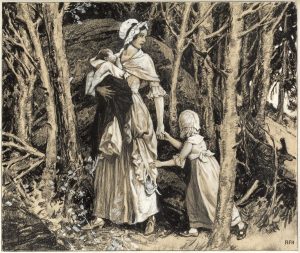
Illustration by Roy F. Heinrich
Image courtesy of National Life Group
In the summer of 1777, British general John Burgoyne led an army south from Canada on Lake Champlain. The Poultney militia reinforced the forts of Ticonderoga and Mount Independence, marched in the retreat, and fought in the Battle of Hubbardton. Meanwhile, when news arrived in Poultney of a raid in Castleton, thirteen women with their many children faced the crisis alone.
The company of women and children, commanded by Beulah Dewey, wife of Captain Zebediah Dewey, marched fifteen miles to Pawlet and then south to Pownal. Once, pointing a musket through an open window, Beulah confronted a party of Tories and scared them off. After Burgoyne’s surrender at Saratoga, the Poultney families returned home. The town militia served throughout the war.
The Valiant 13
- Mrs. William Ward
- Mrs. Thomas Ashley
- Mrs. Ichabod Marshall
- Mrs. Joseph Marshall
- Mrs. Dan Richards (later Mrs. Lindsey Joslin)
- Mrs. John Richards
- Mrs. Timothy Hyde (later Mrs. Abner Adams)
- Mrs. Zebediah Dewey
- Mrs. Silas Howe
- Mrs. Nathaniel Smith
- Widow of Isaac Ashley (later the wife of Joseph Rann)
- Mrs. Nehemiah Howe
- Mrs. Josiah Lewis
—•—
1784 C.E.
Jeffrey Brace
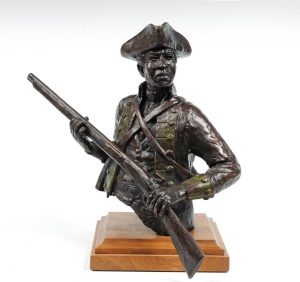
Image courtesy of The American Revolution Institute of The Society of the Cincinnati
African, Revolutionary Veteran, Author, Abolitionist (1742 – 1827)
Jeffrey Brace was born a free man in West Africa with the name Boyrereau Brinch. At sixteen he was captured by European slave traders, shipped to Barbados, sold to a ship’s captain, and eventually arrived in New England. Some years later, while still enslaved, Brace enlisted in the Continental Army and he won his freedom fighting in the Revolution.
At the war’s end in 1784, he settled in Poultney, in newly formed Vermont – the first state to prohibit slavery and faced discrimination and harassment while living there with his wife Susannah Dublin. Susannah, also an ex-slave, had two other children from a previous marriage who were forced into indentured servitude, and the family was tormented by white neighbors in Poultney. Eventually, the couple moved to Sheldon and Georgia, Vermont.
In 1810 he published his life story, one of the most unique and important anti-slavery memoirs written in America. The memoir, “The Blind African Slave” details his life story and is available for purchase from the Poultney Historical Society. The University of Vermont’s faculty union annually awards book scholarships in Brace’s name to students who exhibit “academic excellence and an active commitment to achieving social justice.”
In 2008 the Vermont Division for Historic Preservation erected a Historical Marker honoring Jeffrey Brace.
The fight for racial equity and social justice in Vermont continues, please visit NAACP Rutland to learn more and support the work being done in the Rutland region.
Visit the Jeffrey Brace Historical Marker in front of the Poultney Historical Society
—•—
1791 C.E.
Union Academy
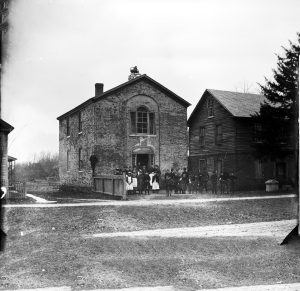
Poultney Historical Society Collections
The Union Academy building, constructed in 1791 and named to commemorate Vermont’s admission to the Union, is the oldest surviving schoolhouse in Rutland County and the second oldest in the state. It was the home of the Debating Society, where Horace Greeley gave his first political speeches in the 1820s. The building was donated to the Poultney Historical Society in the 1980s and has been restored as a schoolhouse.
Visit the Union Academy Building
—•—
1834 C.E.
Troy Conference Academy
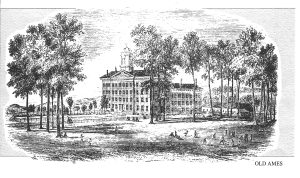
Poultney Historical Society Collections
Troy Conference Academy was founded by the Methodist Church, opening for classes in 1837. From 1863 to 1874, TCA became Ripley Female College, which was the first college for women in Vermont. Ralph Waldo Emerson gave the 1865 Commencement address. Graduate Anna Catherine Green was one of the earliest women mystery writers and was called “the mother of the detective novel.” In 1874, the school returned to being TCA and for generations was the secondary school for many in Poultney.
For more than thirty years in the mid-20th century, the school was known as Green Mountain Junior College, a two-year college for women. In 1974, male students were admitted, and the name changed to Green Mountain College. In the 2000s, GMC offered an innovative environmental curriculum and earned a national reputation for sustainability. Sadly, GMC closed permanently at the end of the 2018-2019 academic year.
Visit the Troy Conference Academy Campus
—•—
1851 C.E.
Tracks Reach Poultney
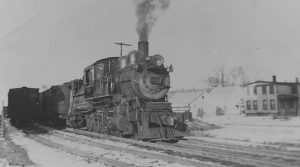
Poultney Historical Society Collections
In the 1840s, two rival railroad syndicates made plans to connect Rutland County to Albany. Only one of the routes, the “Rutland and Washington Railroad,” planned to run through Poultney. Despite public opposition, the tracks reached Poultney in 1851 at a cost of $1 million. The arrival of train service cemented the ascendancy of West Poultney over East and attracted businesses, churches, schools, and the post office from East Poultney. In 1857, the West Poultney Post Office was renamed the Poultney Post Office.
The railroad was purchased by the Delaware and Hudson Railroad Company in 1871 as the Washington Branch of the D&H rail network. The line that most notably carried slate and furniture was nick-named “The Slate Picker.” Passenger service ended in 1936; freight continued until the 1980s. Today, the former railbed is part of the D&H Rail Trail, a popular recreational trail for walking, cycling, cross-country skiing, and snowmobiling that intersects with downtown Main Street.
Learn more about the D&H Rail Trail
Visit the D&H Rail Trail
—•—
1854 C.E.
Slate Industry
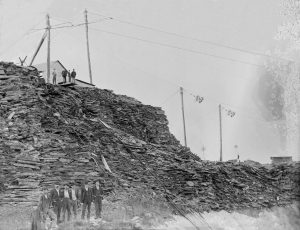
Poultney Historical Society Collections
The slate industry began in our area when Colonel Alonsen Allen started the first quarry on Scotch Hill in Fair Haven in 1845. The first quarry in Poultney was the famed Eureka Quarry established in 1852 by Daniel Hooker. The initial applications of slate products were school slates for writing and slate pencils. By the late 1840s, the Allen quarry was producing 600 school slates per day. He later switched to producing slate tiles as they were more profitable.
Welsh immigrants, skilled in slate processing, moved to the area to work in the quarries, followed by Irish immigrants and later Slavic, Italian, and Jewish immigrants. The industry expanded in a series of booms and busts over the next 40 years, employing thousands of workers. However, the Great Depression caused the complete collapse of the industry, and recovery after World War II was slow due to the emergence of alternative roofing materials.
Today, the industry is experiencing a revival due to the need to replace 19th-century roofs, the recognition of the long life and value of slate roofs, and the revival of many earlier applications. The Slate Valley, which straddles the New York and Vermont border, has 38 companies employing 200-300 employees and producing $40 million a year in slate products.
—•—•—
1860 C.E.
The Two Editors
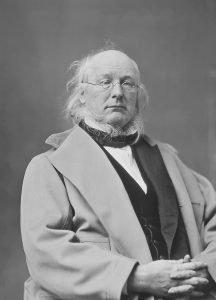
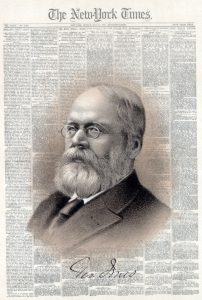
Poultney has a rich history of journalism and is home to two notable figures in American newspaper history: Horace Greeley and George Jones. Greeley, born in Amherst, New Hampshire, apprenticed at the Northern Spectator newspaper in East Poultney from 1826 to 1830. Jones, born in East Poultney, worked at the general store of Amos Bliss, who also owned the Northern Spectator, and became friends with Greeley while they were both employed there.
Greeley left Poultney at the age of 19 for New York City, where he became editor of several publications and in 1841 founded the New York Tribune. Jones left Poultney in 1833 and over the next 18 years gained experience in banking, book publishing, and the newspaper industry. He eventually co-founded the New York Times with Henry Raymond in 1851 and took over as editor upon Raymond’s death in 1869.
Both Greeley and Jones are remembered for their commitment to journalistic integrity and their impact on the American newspaper industry.
The Horace Greeley Foundation continues to hold its annual Writers’ Symposium in East Poultney.
Learn more about the Horace Greeley Foundation
—•—•—
1861 – 1865 C.E.
American Civil War
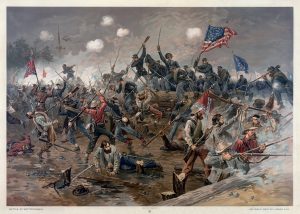
Chromolithograph by Thure de Thulstrup
No period in Poultney’s history changed the town as much as the Civil War, 1861-1865. Poultney sent at least 277 men off to battle at a time when the population was about 2,300. Unlike in later conflicts, these men served alongside their brothers, friends, and neighbors, so there was always a chance of multiple casualties in a single day.
About 20 men died. At home, women kept the home fires burning, took on more farm work, and read the casualty lists and news articles, worrying about family and friends. Poultney’s Civil War Memorial was dedicated in 1915 and stood outside the gates to Troy Conference Academy until the 1950s when it was moved to the East Poultney Cemetery.
Visit the East Poultney Cemetery
—•—
1867 C.E.
First Jewish Community
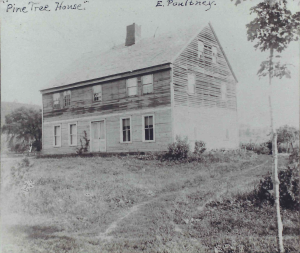
Poultney Historical Society Collections
The first Jewish congregation in Vermont was organized in Poultney in 1867 and incorporated in 1875. The “Israelite Assembly,” later called Benai Israel or “Children of Israel,” was composed of merchants, tailors, and pack peddlers from Poultney and surrounding towns. The community was encouraged to settle in the area by Mr. Mannes, who owned a store in the West Village and was able to order merchandise from metropolitan areas delivered by railroad.
The congregation used the Pine Tree House (still standing at 1016 East Main Street) as a meeting place for Sabbath and holiday services. In 1873, the community purchased land for a cemetery north of the old East Poultney Cemetery. Eventually, many of the Jewish families migrated to larger towns to open their own businesses.
The history of the Poultney Jewish community was saved by Rabbi Joseph Goldman of Denver, Colorado, who in the 1960s discovered the original ‘pinkas’ or minutes book detailing the formation of the congregation and donated the notebook to the American Jewish Archives in Cincinnati.
Today you can still visit the East Poultney Jewish Cemetery, and its oldest gravestone of founding member, Marcus Cane, on Town Hill Road
Learn more about the work done to preserve the East Poultney Hebrew Cemetery
Learn more about the Poultney Area Jewish Community
Visit the East Poultney Jewish Cemetery
—•—
1870 C.E.
Start of Tourism
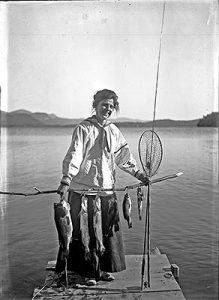
Poultney Historical Society Collections
Poultney’s tourism industry began to take off in the late 19th and early 20th centuries, with the development of several grand resort hotels on Lake Saint Catherine.
The Lake St. Catherine Hotel, Lake View in the Pine, and the Taconic Inn as well as amusement centers like Idylwild Park and Ferncliff, and even steamboat rides on the lake attracted wealthy visitors from across the Northeast and beyond including stars of the New York theater, business magnates, and even an unlikely rumor of a visit by President Grover Cleveland.
The visitors came to Poultney to enjoy the natural beauty of the region and the many recreational activities still available, such as boating, fishing, and hiking. The tourism industry has continued to be an important part of Poultney’s economy to this day, with the town attracting visitors from around the world to experience its rich history and stunning landscapes.
Learn more through the Lake Saint Catherine Association
Visit the Lake Saint Catherine State Park
—•—
1873 C.E.
The Journal Press
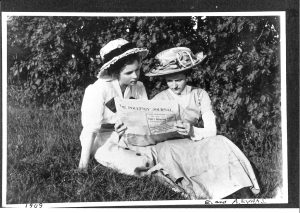
Poultney Historical Society Collections
Poultney’s own newspaper, The Poultney Journal, which served the community from 1873 to 1933 was founded by Welsh immigrant H.J. Humphrey. The Journal Press Building (then known as the Humphrey Block Building) was erected in 1908 and originally housed the newspaper offices and printing presses. In addition to the newspaper, the building also served as a community center and was home to various retail stores on the ground floor.
Over the years the building has been home to a bowling alley, mini-golf course, theater, pharmacy, and myriads of other uses. The building’s rich history and central location make it a popular destination even to this day for small local businesses and entrepreneurs looking to establish themselves in the community.
Visit the The Journal Press building
—•—
1880 C.E.
Bustling Downtown
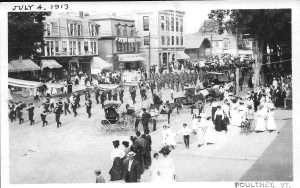
Poultney Historical Society Collections
The decades from the Civil War to the Great Depression were a golden age for small-town America. In Poultney, the three-story department store—J.J. Joslyn’s and then starting in 1894, Barrett’s—at the corner of Main and Maple streets, was the finest store in the area and for a time the tallest building from Troy to Burlington. Celebrated performers, including Tom Thumb, appeared in the theater on the third floor.
In the early 20th century, Poultney’s bustling Main Street had two banks, a hotel, a pharmacy, and stores selling groceries, men’s and women’s clothing, hardware, farm equipment, furniture, jewelry, and automobiles. Movies were shown in the Poultney Opera House. For a decade a trolley from Rutland and Fair Haven ran partway down Main Street.
—•—
1895 C.E.
Poultney Public Library
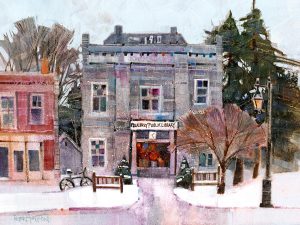
Image courtesy of artist
Peter Huntoon
A subscription library opened in (East) Poultney in 1790, the first in Vermont. In 1841 that library closed, and the books were sold. Today’s Poultney Public Library was founded in 1895 with taxpayer support. In 1906, Mary Farnham became a trustee and the first woman to be a town official. Originally, the library was in a house on the north side of Main Street but soon moved to the old Town Hall.
When the Puritan Dress Company took over the second floor of the building in 1957, the library moved to its home in the former Citizens National Bank building where it continues to reside to this day. To support an expanding collection of books, movies, and recreation equipment and its many services and activities, the library expanded in 2017.
Learn more about the Poultney Public Library’s many community services
Visit the Poultney Public Library
—•—
1900 C.E.
Old Town Hall
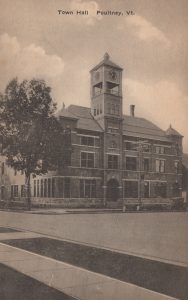
Poultney Historical Society Collections
Poultney’s magnificent Town Hall was built in 1899 at a cost of nearly $20,000. The prime location at the corner of Main and Grove Streets had been the site of the Poultney House, which burned in 1889. The three-story brick building with its tall bell and clock tower opened in January 1900. Town offices were on the first floor along with the Poultney Public Library and rental space. A theatre and lecture hall, sometimes called the Opera House, was on the second floor.
Town Hall was a stop on the Vaudeville circuit; later silent movies were screened on Saturday nights. During the influenza epidemic of 1918, rooms served as a hospital. In the 1950s, the Poultney Dress Company, a subsidiary of Puritan Dress, took over much of the building. In 1967 and 1968, the Monarch of Main Street was torn down and replaced with today’s Town Office.
Visit the Town Office
—•—
1936 C.E.
Poultney High School
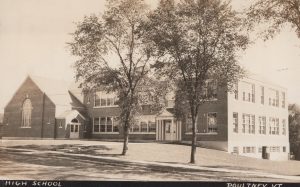
Poultney Historical Society Collections
For most of the 19th century, Poultney’s young people were taught in small schools that provided an education to age 14. At one point, there were 15 school districts scattered around the community. The system of common school education began to change in 1884 with the construction of the two-story Graded School on Main Street, now an apartment building. In 1896, a schoolhouse was built on the green in East Poultney, and is now the home of the Poultney Historical Society. Both buildings seem old-fashioned today but once represented a commitment to quality education. Students wanting to continue their education might attend Troy Conference Academy.
In 1936, Poultney High School opened and quickly became a powerhouse in both boys’ and girls’ sports, competing in the Marble Valley League. Poultney’s modern elementary school opened in 1968. Today Poultney’s schools are part of the Quarry Valley Unified Union School District along with Proctor and West Rutland. The school’s mascot is the Blue Devil, and the school colors are blue and yellow. Many Poultney High School alumni still live and work in the town, and the school has a strong sense of community and tradition.
Learn more about Poultney High School
Visit the Poultney High School
—•—
2003 C.E.
First Maplefest
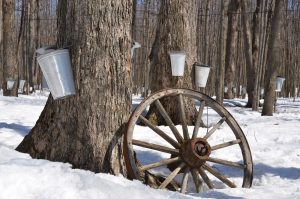
The first Maplefest in Poultney, Vermont was held on March 22nd, 2003 with the goal of celebrating the rich history and cultural heritage of the town. The event was organized by the Poultney Area Chamber of Commerce. Over the years, the fest has featured a variety of activities, including a town pancake breakfast, a maple syrup-making demonstration, and a dance in the evening.
The first Maplefest was a huge success and has become an annual event in Poultney, with thousands of visitors coming from all over the region to participate in the celebration of all things maple. Today, the Maplefest continues to be a beloved tradition in Poultney, with a variety of activities and events that highlight the town’s rich history and cultural heritage.
Learn more about Maplefest and the Poultney Area Chamber of Commerce
—•—
2013 C.E.
Stone Valley Arts
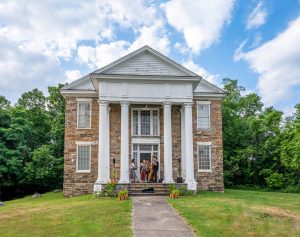
Photograph by Chuck Helfer
Through its programming, Stone Valley Arts aims to inspire interest and participation in the arts; enriching the quality of life in the region by integrating the arts into the fabric of the community. SVA curates art exhibits and provides classes, workshops, presentations, and events in the visual, performing, and literary arts for all ages and levels of experience.
The organization is based in Poultney, Vermont, and occupies the historic Old Stone Church, originally built as a Methodist Church in 1827 and later served as a school, community center, and Masonic Temple. Stone Valley Arts is a 501(c)3 non-profit community arts organization that was founded in 2013 as part of the Poultney 2020 revitalization movement.
Learn more about Stone Valley Arts and its many offerings
Visit Stone Valley Arts
—•—
2015 C.E.
Slate Valley Trails

Poultney is home to Slate Valley Trails (SVT), a volunteer community group founded in 2015 and a chapter of the Vermont Mountain Biking Association (VMBA). SVT is a non-profit organization whose mission is to build, maintain, and promote foot and bicycling trails in the Slate Valley region of Vermont. SVT works with public and private landowners who generously host trails on their land. With trailheads located just outside of town, SVT offers more than 50 miles of multi-use trails for hiking, biking, snowshoeing, and cross-country skiing.
The trails pass through a variety of landscapes, including forests, fields, and historic sites. In addition to maintaining and improving the trails, Slate Valley Trails also hosts outings, events, and volunteer opportunities to encourage community engagement and appreciation of the area’s natural and cultural heritage.
SVT is supported by donations from trail users, community members, businesses, and grants, and works closely with local landowners, land trusts, businesses, and government agencies to ensure that the trails are sustainably managed and accessible to the public for all to enjoy.
Learn more about Slate Valley Trails and its hiking and biking trail network
Visit Slate Valley Trails – Fairgrounds Trailhead
—•
Today
Build Our Future

Poultney has a rich history that has been shaped by the diverse cultures of those who have called it home. From its beginnings as a frontier town and transportation hub to its current status as a thriving community of farmers, quarry workers, educators, and artists, Poultney has always been a place where hard work and determination have thrived.
As we look toward the future, it’s clear that Poultney has the potential to continue growing and thriving. However, it will take the vision, energy, and efforts of every member of our community to shape the future we want.
We invite you to share your thoughts on what you would like to see in the future of Poultney. What kind of businesses do you want to see flourish? What kind of community events and gatherings would you like to see more of? How can we work together to make Poultney a place where everyone can thrive?
Your ideas and contributions are valuable, so let’s come together and start building the future of Poultney, together.
Please share your thoughts with us here
